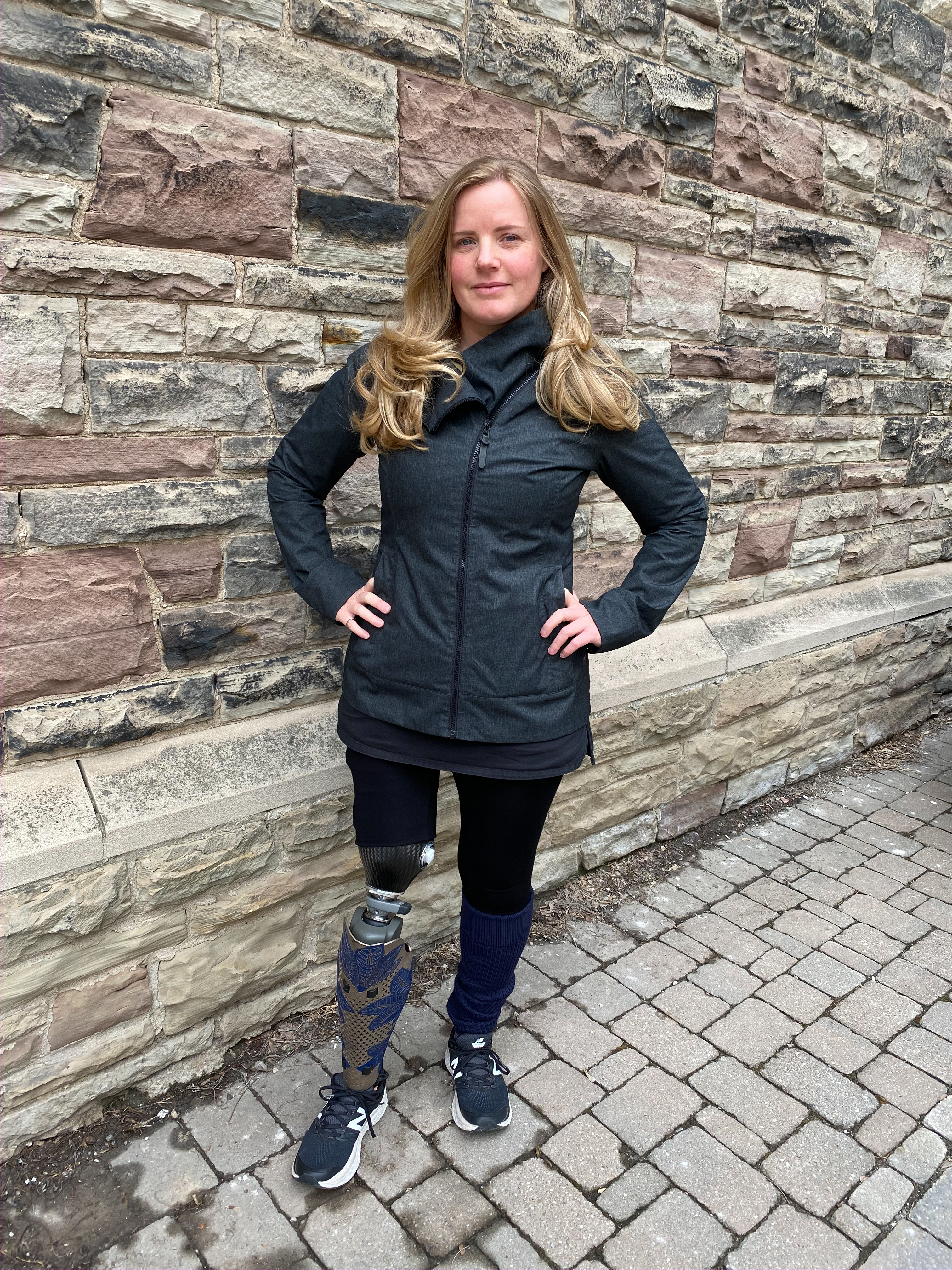Once a favourite part of her daily commute, Toronto-based professional engineer Meredith Wilkinson's cycle to work one morning in September 2017 profoundly changed her personal life, her job and her very existence. While on her bike that day, Wilkinson was pulled under the front wheel of a garbage truck when its driver made a right turn across her on-street bike lane. She was pinned under the truck and dragged several metres; and as a result of the incident, she lost the lower half of her right leg. Wilkinson spent five days in the intensive care unit, five weeks in hospital care and six weeks in rehabilitation.
“There is a life-long impact,” says Wilkinson, who is a senior transportation engineer with BA Group. “I’m still learning how to adapt to the constant physical demands of living with a prosthetic leg. It’s a continual challenge to accommodate both the physical requirements of a recovery and my professional career.”
Wilkinson says her recovery is an ever-evolving process that she does not force beyond her determination to live in each moment, and she works through it as it presents itself in the many facets of her personal and work life. She feels grateful to have had the support of her colleagues at BA Group, a private consulting firm in Toronto that focuses purely on urban transportation issues, where she’s been part of the team since 2005. “I am fortunate to have a very supportive employer—this has been very beneficial in regard to my recovery,” Wilkinson says. “Advocating for myself and being able to communicate about my new physical limitations is crucial, and I’m still learning how to do this effectively. However, it can be difficult to request special accommodation (even if warranted), as it can feel like an imposition, particularly in a professional environment.”
Wilkinson describes her work projects as involving functional, preliminary and detailed design work, with an emphasis on promoting active transportation. Throughout her years at BA Group, she has been an avid cyclist and supporter of alternative transportation programs, presenting best practices for providing bicycle parking for commercial facilities at the International Parking Institute and Canadian Parking Association conferences. She has campaigned for the provision of secure bicycle parking for her colleagues and participated in an annual bike-to-work month event. She adds that cycling infrastructure has become a major work component, and she enjoys the “puzzle” of finding solutions that support all the transportation elements of a project, particularly as Toronto’s urban development sites are becoming increasingly compact and complicated.
The collision in 2017 hasn’t dampened her spirits so much as illuminated them from a different angle. “With respect to my work, I’m now even more determined to be part of projects that encourage safer, more attractive and accessible options for active transportation,” Wilkinson says. “Despite my collision, I still encourage cycling and am keen on any solution that helps reduce single-occupancy vehicle trips.”

FINDING NEW STRENGTH
As her physical abilities have shifted, Wilkinson says she has found strength and resilience in new places within herself and within the industry. Although there are some aspects to her job that she can no longer physically participate in at this stage in her recovery, she continues to tap into the natural curiosity and creativity that transportation engineering has cultivated in her since she discovered her love for the field in a co-op placement during university. “I enjoy the mix of logic and creativity required to do the job,” Wilkinson adds. “My interest in transportation continued to grow as I came to appreciate how relatable the field is—literally everyone has an opinion about transportation as it directly impacts our everyday lives in a very personal way.”
Looking forward from an honest place, Wilkinson says she finds it essential to live and work in each day as it produces new obstacles, be they daunting or exciting. “I’m still adjusting to returning to work—it’s difficult to plan for the future when I’m still figuring out the present,” she explains. “Due to my recent experience, I’m drawn to issues concerning road safety, and I’m particularly interested in how the physical design of our streets usually determines how they’re used.
Toronto currently appears to be experiencing a road safety crisis, and as a transportation engineer, I’m fortunate to be in a position to be part of the solution. I’m encouraged to see the focus in our industry shifting from the singular goal of keeping vehicular traffic moving to also improving the experience for pedestrians and cyclists, and pushing active transportation as a viable, accessible alternative.”
To access the Engineering Dimensions article: Click Here
Image courtesy of Natalya Anderson.
